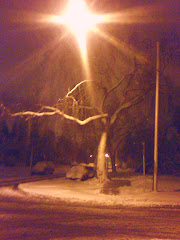“Patterns of play, when seen as a whole, illuminate both his art as a poet and his unique imagination. . . Playfulness touches almost everything Hopkins treats: God the saints, sacraments, himself, other people . . . When he plays, Hopkins’s preferred modes are whimsy, comedy and the incongruous, wit, light satire, and silliness.” (Feeney 173).
I am not really sure what other forms of play there are besides that list, so it might be said that Hopkins’ wordplay embraces much, if not all forms of play that are available. Feeney further describes some of Hopkins' more whimsical images in his poems.
[W]himsy includes imagining himself as a woodlark, buxom football, and a Welsh bard. The moon wraps herself in scarfs, and Welsh hills hug cow-clouds for rain-milk. A little square house is like a man with a toothache and a bright stormcloud like a shiny bland heard. Moonlight is a blue cobweb. God sits on a thunder-throne and creates with hewing axe and tricking water. Christ is a stage-actor and the Holy Ghost is a male who cheers on a fellow cricketer and a female who broods on her huge world-as-egg. Christ, Mary and the saints live in a lighted barn as Hopkins peeks through a knothole. Stars are fire-folk, citadels, diamond mines, elves’-eyes. A pocket watch is Hopkins’ “mate” and his poems are babies, a pile of linen and dirty Thames-water. Pixies, fairies, goblins, and witches grace hi pages. And he blows a kiss to the stars.
Feeney also cites “wordplay hyphenates, concepts, and sound play” as elements of Hopkins’ poetry. This is the stuff of the avant-garde as well, including avant-garde movements such as Dada and Surrealism, Oulipo, and the Language Poets. It must be said that Andre Breton and others who have come after him stress that Surrealism is not a product or a style, but an approach. Thus, there cannot be said to be any truly Surrealist literature that doesn’t emanate from the imagination, from the subconscious. You cannot “copy” surrealistic style. Furthermore, Breton maintained that Surrealism was first and foremost, a verbal, not a visual, art form. “Whoever says expression says, to begin with, language . . . you must not be surprised to see surrealism place itself first of all almost exclusively on the plane of language.” 2nd manifesto. Surrealist Mind p. 44
I am going to use Dada and Surrealism, which are very closely related and which had many of the same artists involved in both movements, to compare to Hokpins’ poetry for a number of reasons. First, because they are among the earliest manifestations of avant-garde activity and most avant-gardes that came after were reacting to them, either in the positive or reacting against them. Second, Andre Breton had published Hopkins and evidently held him in esteem. And third, and most important, because of the timing of Hopkins’ life and publication, which was very close in time to the historical moment that Dada and Surrealism had developed out of. Had Hopkins’ life gone on for another 20-40 years, into his 60s or even his 80s, he would have had direct knowledge of those movements. Whether or not he would have joined or affiliated himself with them is a matter of pure speculation. I will deal with the pros and cons here briefly before I move on. There are arguments for both sides.
Hopkins and (anti-) Clericalism
Notably, there was the anti-clericalism of Breton and many Surrealists. While it did not keep Breton from admiring Hopkins, it more than likely would have put Hopkins off and kept him from affiliating himself too closely with the movement. In fact, because the Surrealist movement was so heavily French, Spanish and German, most of the Surrealists were Catholic in upbringing and Benjamin Peret was one of the most anti-Catholic anti-clerical members of the surrealists (https://melbourneartcritic.com/2012/11/27/anti-catholicism-surrealism/). For someone who was not only a Jesuit priest in the Catholic Church, but had converted to Catholicism as an adult, this would likely have precluded Hopkins’ from participating fully within the Surrealist movement. Hopkins was a very devout Catholic. In fact, in 1888, his last year, he wrote:
I was a Christian from birth or baptism, later I was converted to the Catholic faith and am enlisted 20 years in the Society of Jesus. I am now 44. I do not waver in my allegiance, I never have since my conversion to the Church. (qtd in Harris, XV.)
Notwithstanding, Harris sees in Hopkins’ “terrible sonnets,” written in the final years of his life, something of a crisis of faith; certainly a different direction, which Hopkins called “inspirations unbidden and against my will . . . [that] revealed a deformed image of his own humankind and a violation of Christ’s body” (xiii). Harris talks about a shift in Hopkins’ poetry “that illustrates the grave anxieties the age experienced in seeking a sound basis for epistemology in the face of a metaphysics exploded by ocean empiricism and a Biblical authority devastated by Higher Criticism” (4). At the turn of the 19th/20th centuries, the crisis of faith suffered in the West corresponded in large part to the rise of science, as well as the horrors that were to come out of World War I. Hopkins was feeling the pull of the former and was decidedly trying not to let doubt overtake him.









No comments:
Post a Comment